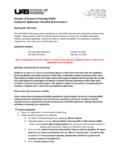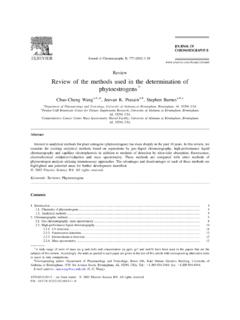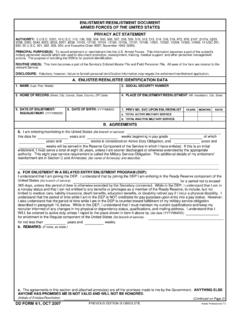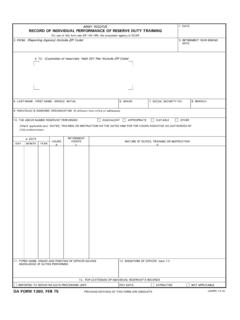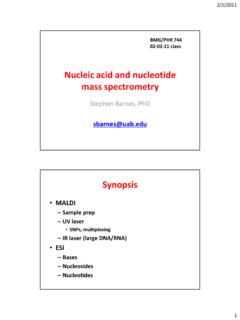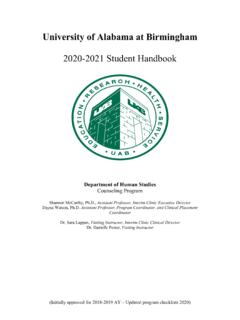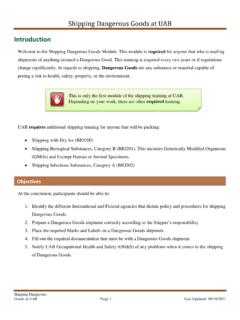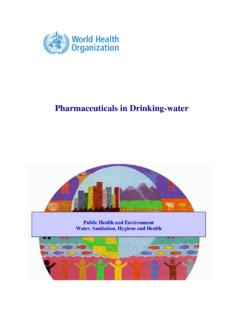Transcription of Basic Overview of Preclinical Toxicology Animal Models
1 Basic Overview of Preclinical Toxicology Animal Models Charles D. Hebert, , December 5, 2013 Outline Background In Vitro Toxicology In Vivo Toxicology Animal Models Background Solely the dose determines that a thing is not a poison. Paracelsus (German-Swiss physician), 1493-1541. Water, in excess, is toxic. What is Toxicology ? Toxicology is the study of the adverse effects of chemical, physical, or biological agents on people, animals, and the environment. Toxicologists are scientists trained to investigate, interpret and communicate the nature of those effects. Why Do Toxicology Testing Need to prove new drugs are safe: Before first administration to humans Before later clinical trials Good Laboratory Practices Regulations to ensure the integrity of data from nonclinical studies.
2 In the USA, the GLPs are administered by the FDA, and are laid out in 21 CFR Part 58 Other regulatory agencies (OECD, EPA) have their own sets of GLP regulations that are similar to but not identical to those of the FDA. Definitive Preclinical studies must be GLP compliant In Vitro Toxicology In vitro Toxicology The crossover point between drug discovery and drug development. Provide information on mechanism(s) of action of a drug Provides an early indication of the potential for some kinds of toxic effects, allowing a decision to terminate a development program before spending too much money. In vitro methods are widely used for: Screening and ranking chemicals Studying cell, tissue, or target specific effects Improve subsequent study design In Vitro Toxicology In vitro methods are usually Less expensive to run than in vivo studies Faster than in vivo studies (PLUS they don t bite!)
3 Somewhat less predictive of toxicity in intact organisms In Vitro Toxicology Screening Cytotoxicity Protein binding CYP inhibition/induction Membrane permeability Metabolic stability Interspecies comparison In Vitro Toxicology Cytotoxicity Cytotoxicity = toxicity to cells Many different types of cells can be used; cells from higher organisms ( , liver cells, blood cells); bacteria; fungi; yeast Can be used to assess viability, structural effects, and/or function Structural , effects on membrane integrity Functional , effects on mitochondrial function Cell proliferation decreases or increases In Vitro Toxicology Dermal or Ocular Toxicity Replace in vivo tests such as Dermal Corrosion, Skin Irritation, Draize Eye Irritancy Many tests now available in kit form Example: EpiDerm Normal human epidermal keratinocytes Cultured on a permeable polycarbonate membrane Stratified, highly differentiated, model of human epidermis Metabolically and mitotically active cells organized into differentiated layers In Vitro Toxicology Immunotoxicity These are, by necessity, functional tests Examples Cytokine release.
4 Assess ability of a chemical to induce release of cytokines/chemokines. Can use cells from various sources, including peripheral blood cells. Many variations of this assay. TGN 1412 Drug-induced histamine release. Cremophor, polysorbate 80 In Vitro Toxicology Metabolism and Kinetics Assess ability of a chemical to induce metabolism of specific substrates, including the chemical itself Information about metabolic pathways by which the chemical can be metabolized Information on production of toxic/reactive metabolites Interspecies comparisons Can provide information on relevance of a particular Animal model from a metabolic standpoint In Vivo Toxicology - Purpose Results from Preclinical Toxicology studies should, at a minimum: Establish a safe starting dose for clinical studies Provide information on a drug-treatment regimen that would produce the least toxicity Assess target organ toxicity and its reversibility Provide insight into biomarkers for clinical monitoring Safety Assessment Types of Testing Required Single dose (acute) Toxicology testing Combine with preliminary testing Repeat dose Toxicology testing The pivotal testing Toxicokinetic and pharmacokinetic studies Next lecture Safety Pharmacology CV, respiratory and CNS Stand alone studies or combine with Toxicology ?
5 Local tolerance testing Parenteral Stand alone studies or combine with Toxicology ? Genotoxicity testing Types of Preclinical Safety Studies The number and types of studies required depend on the therapeutic indication. Drugs for life-threatening illnesses require fewer studies to reach the clinic. In general, Animal studies are conducted in two species, one rodent ( , rat, mouse) and one non-rodent ( , dog, nonhuman primate). Biologics may require only one species. Other species ( , rabbits, ferrets, hamsters, mini-pigs) may be used for special studies ( , vaccine studies). Types of Preclinical Safety Studies Usually start with: Single Dose (Acute/Range-Finding) Used to determine the most appropriate dose range in the species to be tested. Used to get an idea of target organs Includes minimal number of animals and evaluations ( , body weights, clinical signs of toxicity) Usually not required to be GLP-compliant Types of Preclinical Safety Studies Repeat Dose Toxicity Animal Models Small molecules two species (one rodent, one non-rodent) Biologics may require only one species if only one relevant species can be identified Should mimic as closely as possible the planned clinical design Route Duration Schedule Requirements vary between the different regulatory agencies.
6 Types of Preclinical Safety Studies Repeat Dose Toxicity Extensive evaluations of toxic effects Body weights Clinical signs of toxicity Food consumption Clinical pathology Histopathology Other Large animals usually undergo more extensive evaluation ( , ECGs) At least one dose should produce dose-limiting toxicity. At least one dose should be non-toxic. Types of Preclinical Safety Studies Safety Pharmacology Used to determine the effects of the drug on specialized organ systems ( , cardiovascular, respiratory, neurologic) Chronic Toxicity/Carcinogenicity Used to determine the effects of long-term exposure to the drug, including the ability to produce cancer. May not be required for drugs that are intended for only short-term use ( , antibiotics) and that are expected to have no permanent effects on DNA.
7 Reproductive Toxicity/Teratogenicity Evaluates effects on reproductive function and ability to produce birth defects Biologic Products Biologics ( , gene therapy vectors, vaccines, monoclonal antibodies) require some of the same tests as small molecules Typically each biologic has its own set of unique additional requirements Frequently require different Animal Models than small molecules ( , hamsters for adenovirus gene therapy vectors) Issues Pertinent to Specific Classes of Biologic Products Product Class Examples Class-Specific Preclinical Issues Monoclonal Antibodies Immunogenicity, stability, tissue cross-reactivity, effector mechanisms Gene Therapy Biodistribution, persistence, genomic integration of the vector, species specificity of the transduced gene, permissiveness for infections by viral vectors, duration and level of gene expression Recombinant Proteins Immunogenicity, autoimmunity Preventive Vaccines Enhancement of intended disease, autoimmunity, tolerance, cytokine release, immunogenicity, protection from disease Animal Models in Toxicology Testing Key Assumptions Other organisms can serve as accurate predictive Models of toxicity in humans.
8 Selection of an appropriate model to use is key to accurate prediction in humans. Understanding the strengths and weaknesses of any particular model is essential to understanding the relevance of specific findings to humans. Caveat Drugs showing safety and efficacy in Preclinical Animal Models may show very different pharmacological properties when administered to humans Animal Models Development of proper Preclinical Models which can efficiently predict drug behavior in humans is essential prior to testing a drug in a human subject. The FDA and other regulatory agencies are more and more requiring Sponsors to provide data to support selection of the specific species (and even strains) used to support testing of new drugs. Animal Models Some (of the many) reasons that a given Animal model may be inappropriate are: Lack of appropriate drug target in the Preclinical Animal model Presence of irrelevant target Differences in metabolic fate Differences in susceptibility to infection by specific pathogens Animal Models Lack of Appropriate Drug Target Examples: Testing of therapeutic antibodies Relevant species is one in which the antibody is pharmacologically active, the target antigen should be present or expressed and the tissue cross-reactivity profile should be similar to that in humans.
9 Sex-specific drugs Don t test TOXICITY of a drug intended for treatment of prostate cancer in FEMALE rats. No, really! Animal Models Presence of Irrelevant Target Example: Unleaded gasoline-induced nephropathy Unleaded gasoline has been shown to induce a unique type of nephropathy in male rats following inhalation exposure. Accumulation of hyaline droplets containing 2u-globulin in the proximal tubules, leading to cell death and denudation of the lining of specific segments of the proximal tubules Similar syndrome not seen in female rats, or in mice and nonhuman primates of either sex 2u-globulin is a male rat-specific protein. Humans have not been found to produce 2u-globulin. Suggests that humans are probably not at risk for this type of nephropathy after exposure to unleaded gasoline Animal Models Differences in Metabolic Fate Example: Tamoxifen carcinogenicity Genotoxic in the livers of rats and mice, but produces liver cancer only in rats Has not been shown to produce DNA adducts or liver tumors in human patients Enzymatic pathway responsible for production of tamoxifen metabolites that form adducts with DNA is several-fold higher in rats than humans while the activity of detoxification pathways is lower in rats than in humans Thus, the carcinogenic effects of tamoxifen observed in rats have limited relevance to assessment of the safety of the drug in humans.
10 Animal Models Differences in Susceptibility to Infection by Specific Pathogens Example: Adenovirus vector Toxicology Adenoviruses are currently use in gene therapy and in particular for development of oncolytic virus vectors for treatment of cancer. Mice and rats are the most commonly used rodent Models for safety testing. The problem with rats and mice is that tissues of the rat and mouse are not permissive for human adenovirus replication. Therefore, it is not possible to assess the possible adverse effects associated with replication of the vector in non-tumor tissue. The only two known small Animal Models that are permissive (or semi-permissive) for adenovirus replication are Syrian hamsters and cotton rats (MEAN, MEAN, little creatures!). Animal Models Bottom Line Pick the right Animal model(s) It is wasteful of resources (time, money), unethical from an Animal welfare point of view, and potentially dangerous to humans to perform safety testing in an inappropriate Animal model QUESTIONS?

